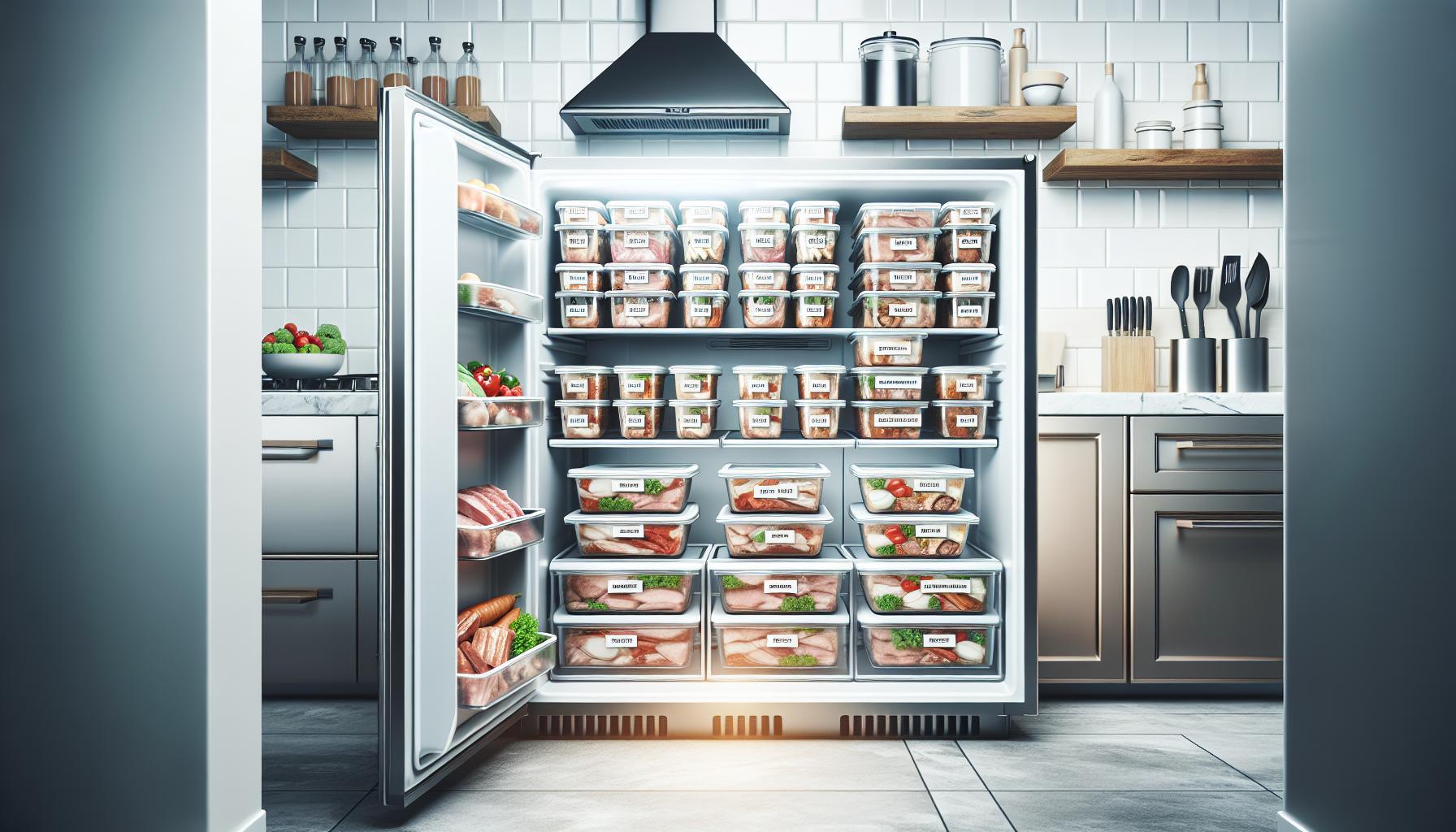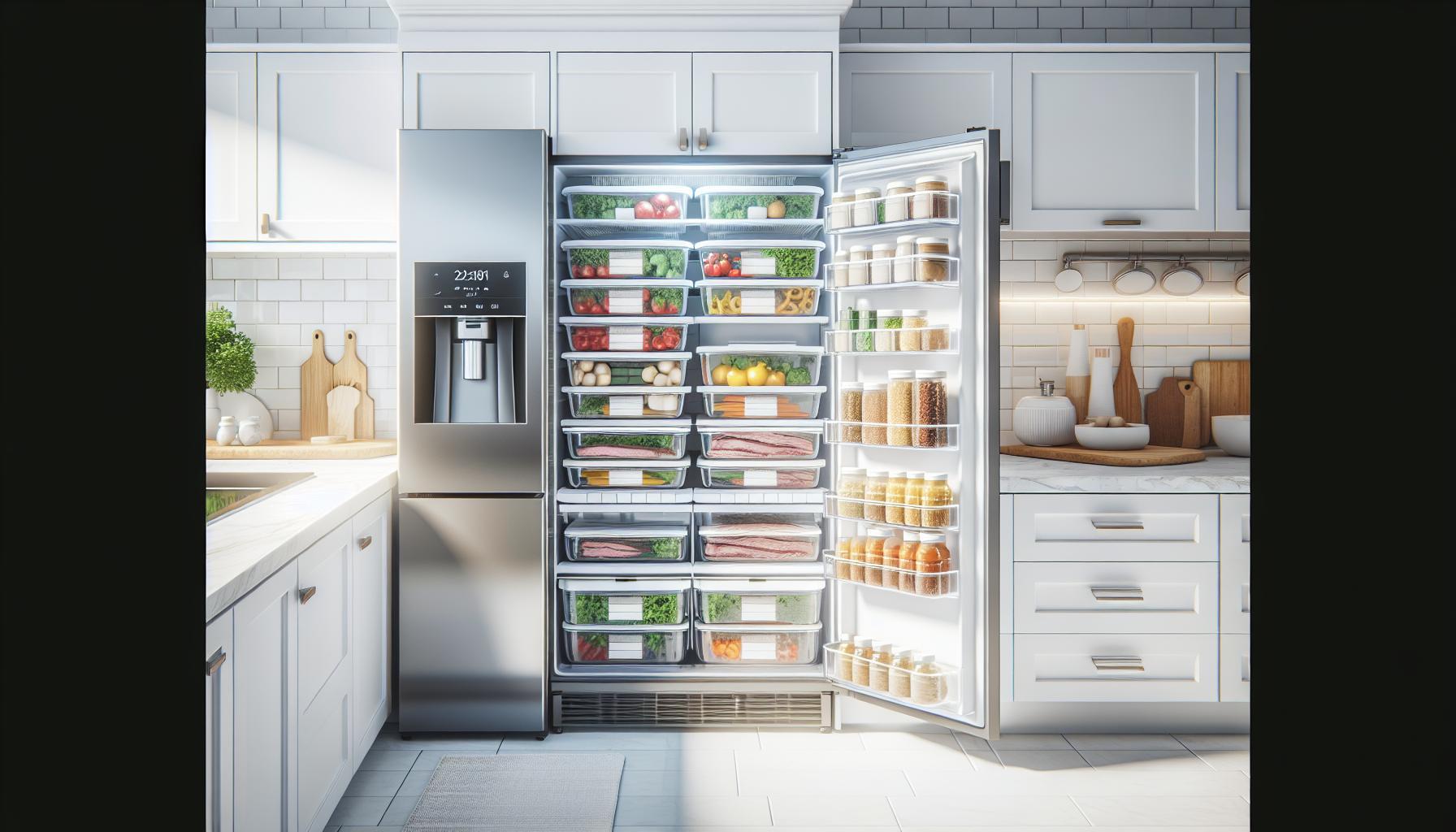Did you know that properly storing beef can save you both money and food waste? Understanding how long beef can last in the freezer is crucial for maintaining its quality and safety. Freezing meat is an excellent way to prolong its freshness, but neglecting proper storage techniques could lead to freezer burn, impacting flavor and texture.
Many home cooks face the dilemma of ensuring they store beef correctly while maximizing its lifespan. This guide will help you navigate the ins and outs of freezing beef, providing you with science-based tips on storage times and methods. By following the right practices, you can keep your beef delicious and safe to eat, ensuring you make the most of your culinary endeavors. Read on to learn how to effectively preserve your beef and prevent freezer burn.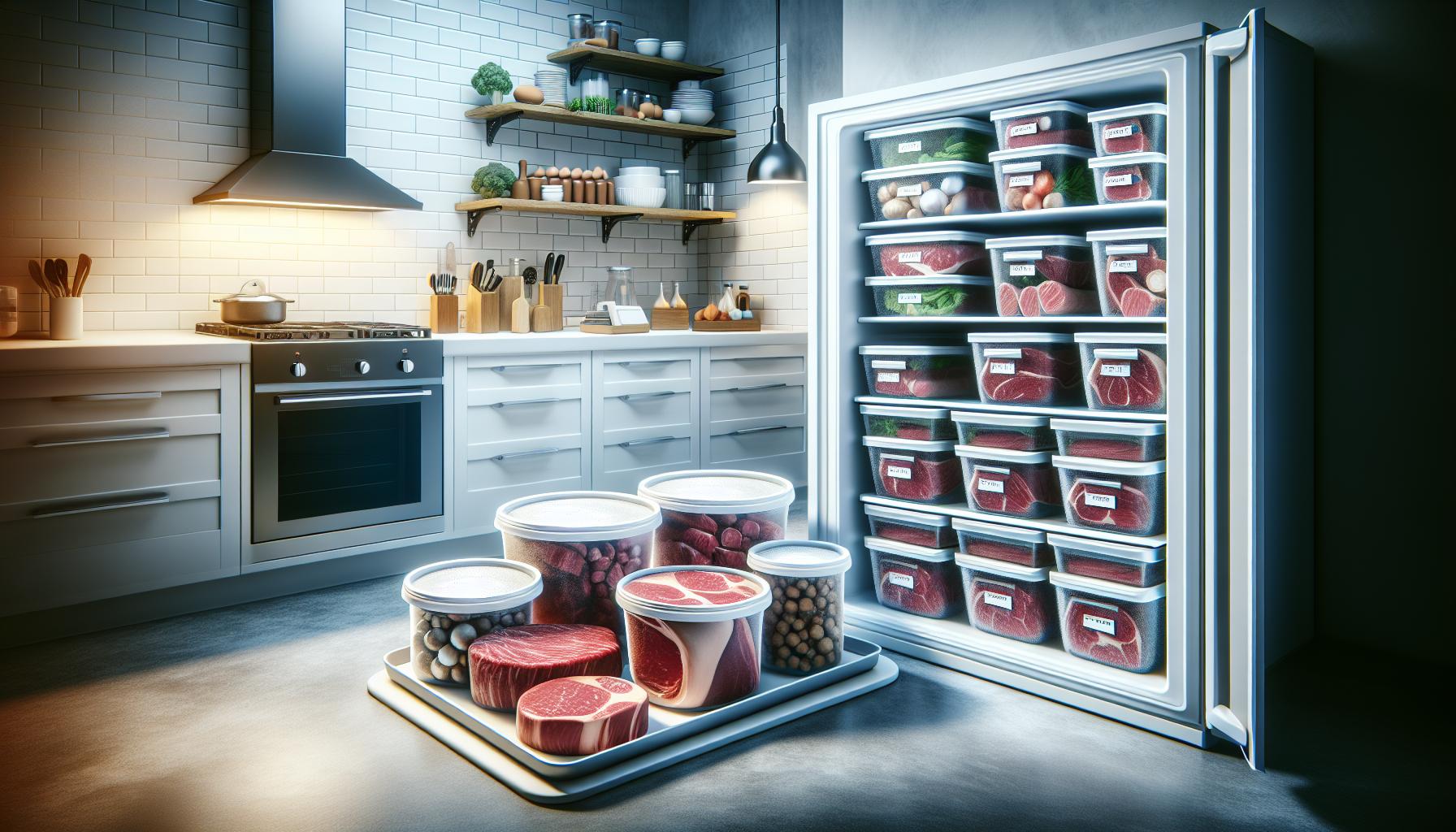
How Long Can Different Cuts of Beef Last in the Freezer?
Beef is a versatile protein enjoyed in various dishes, and understanding how long different cuts can be safely stored in the freezer helps you make the most of your purchases and meal prep. While freezing is an excellent way to extend the life of meat, each cut has its own recommended storage duration to maintain quality and safety.
For optimal flavor and texture, consider these storage guidelines for various beef cuts:
| Beef Cut | Recommended Freezer Duration |
|---|---|
| Ground Beef | 3-4 months |
| Steaks (e.g., ribeye, sirloin) | 6-12 months |
| Roasts (e.g., chuck, brisket) | 4-12 months |
| Beef Ribs | 4-6 months |
| Beef Liver | 3-4 months |
Understanding these timeframes helps you avoid freezer burn and retain the beef’s delicious qualities. To ensure quality, always wrap your beef tightly in freezer-safe packaging, removing as much air as possible to prevent freezer burn, which can occur when meat is exposed to air and results in discoloration and dry spots.
Make a habit of labeling your packages with the type of cut and the date you froze it. This way, you can keep track of how long each cut has been stored, ensuring you use them within the recommended times. By adhering to these guidelines, you can savor tasty beef meals without compromising on quality!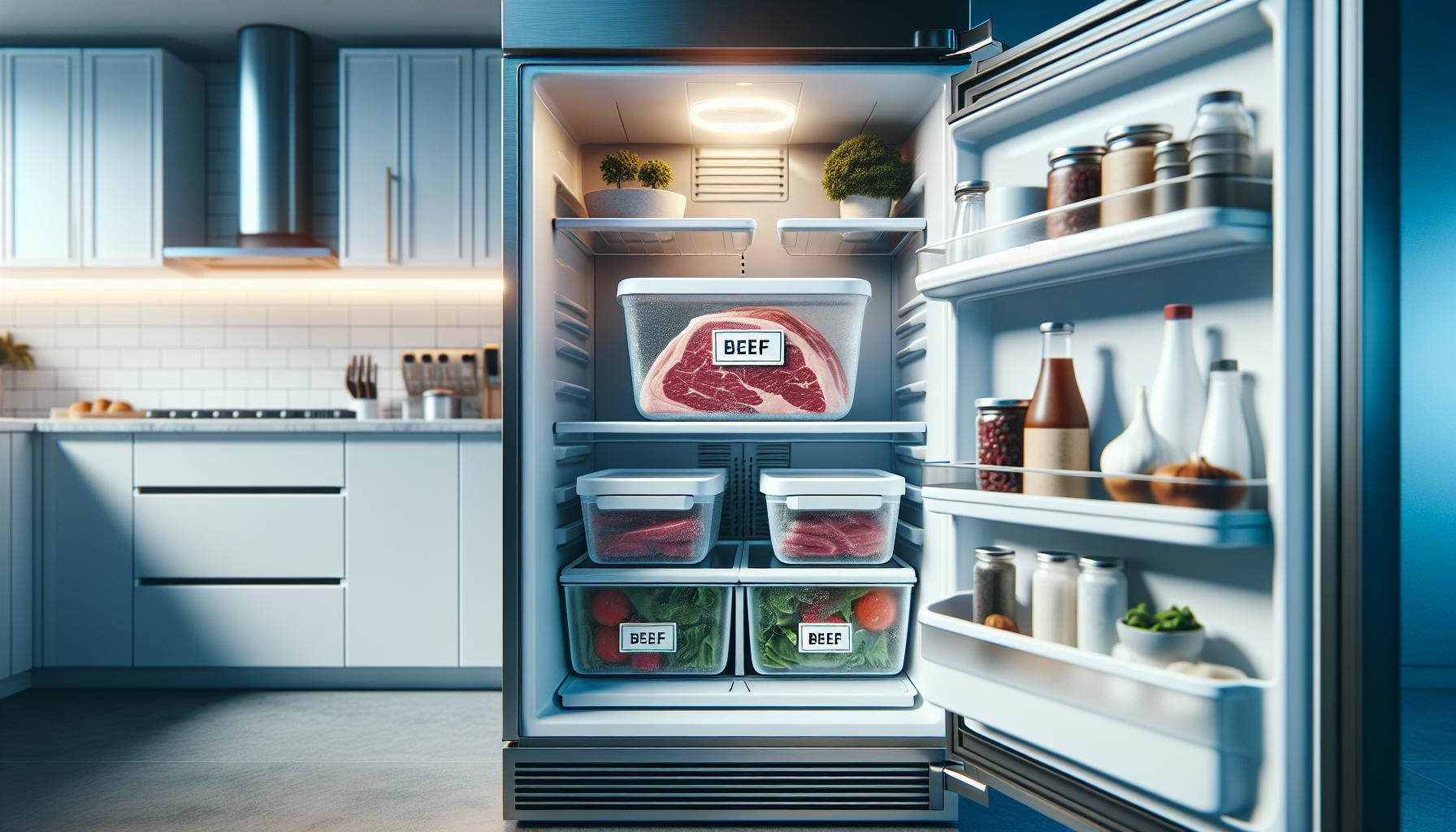
Understanding Freezer Burn and Its Effects on Beef
Freezer burn is a common concern for anyone who stores meat, including beef, for extended periods. This condition occurs when food is improperly wrapped or stored in the freezer, leading to moisture loss and exposure to air. As a result, the surface of the meat can become discolored, often turning grayish or white, and develop dry patches that can affect both texture and flavor. Although freezer-burned beef is not unsafe to eat, it can become unappetizing and less enjoyable.
To effectively combat freezer burn, the key lies in proper storage techniques. Make sure to wrap beef tightly in plastic wrap, aluminum foil, or freezer paper. For enhanced protection, consider using a vacuum sealer, which removes excess air that contributes to freezer burn. When using bags, eliminate as much air as possible before sealing them. Label all packages with the cut type and date to help you keep track of their age. Regularly checking your freezer inventory also ensures that you use your beef within recommended timeframes, preventing waste and maintaining quality.
Maintaining the right freezer temperature is crucial to minimizing freezer burn. The ideal freezer temperature is 0°F (-18°C) or lower. Regularly monitor the temperature with a thermometer to ensure it stays consistent. If you notice fluctuations or if your freezer frequently opens, consider organizing your beef for frequent access to limit exposure to warmer air. Implementing these strategies will help preserve the quality of your beef, allowing you to enjoy flavorful meals long after your purchase.
Best Practices for Wrapping and Storing Beef
Properly wrapping and storing beef is essential to maintaining its quality and preventing freezer burn, which can mar the flavor and texture of your meat. The primary goal is to keep air and moisture away from the beef, which is achieved through effective packaging methods. Here are key strategies to ensure your beef stays fresh in the freezer.
Start by choosing the right materials for wrapping. Plastic wrap, aluminum foil, and freezer paper are all good options, but they perform differently. Plastic wrap is excellent for tightly sealing around the beef, while aluminum foil can provide an extra layer of protection. Freezer paper is specifically designed for long-term storage and can prevent moisture loss effectively. However, for the best results, consider using a vacuum sealer. This method removes air and creates an airtight seal around the meat, significantly reducing the risk of freezer burn.
When wrapping, make sure to eliminate as much air as possible. For items in bags, press down to push out excess air before sealing. Label each package with the type of meat and the date it was frozen; this practice helps you keep track of how long each cut has been stored. It’s advisable to use beef within 4-12 months, depending on the cut: for instance, ground beef can last 3-4 months, while roasts and steaks may last up to a year. This information can guide you in using your inventory efficiently, ensuring freshness and flavor in your meals.
Lastly, organize your freezer to minimize temperature fluctuations. Store beef towards the back, where it’s coldest. Regularly checking your inventory and rotating older packages to the front can help prevent items from being forgotten and going bad. By following these best practices, you can enjoy delicious, high-quality beef for months to come, contributing to both food safety and culinary satisfaction.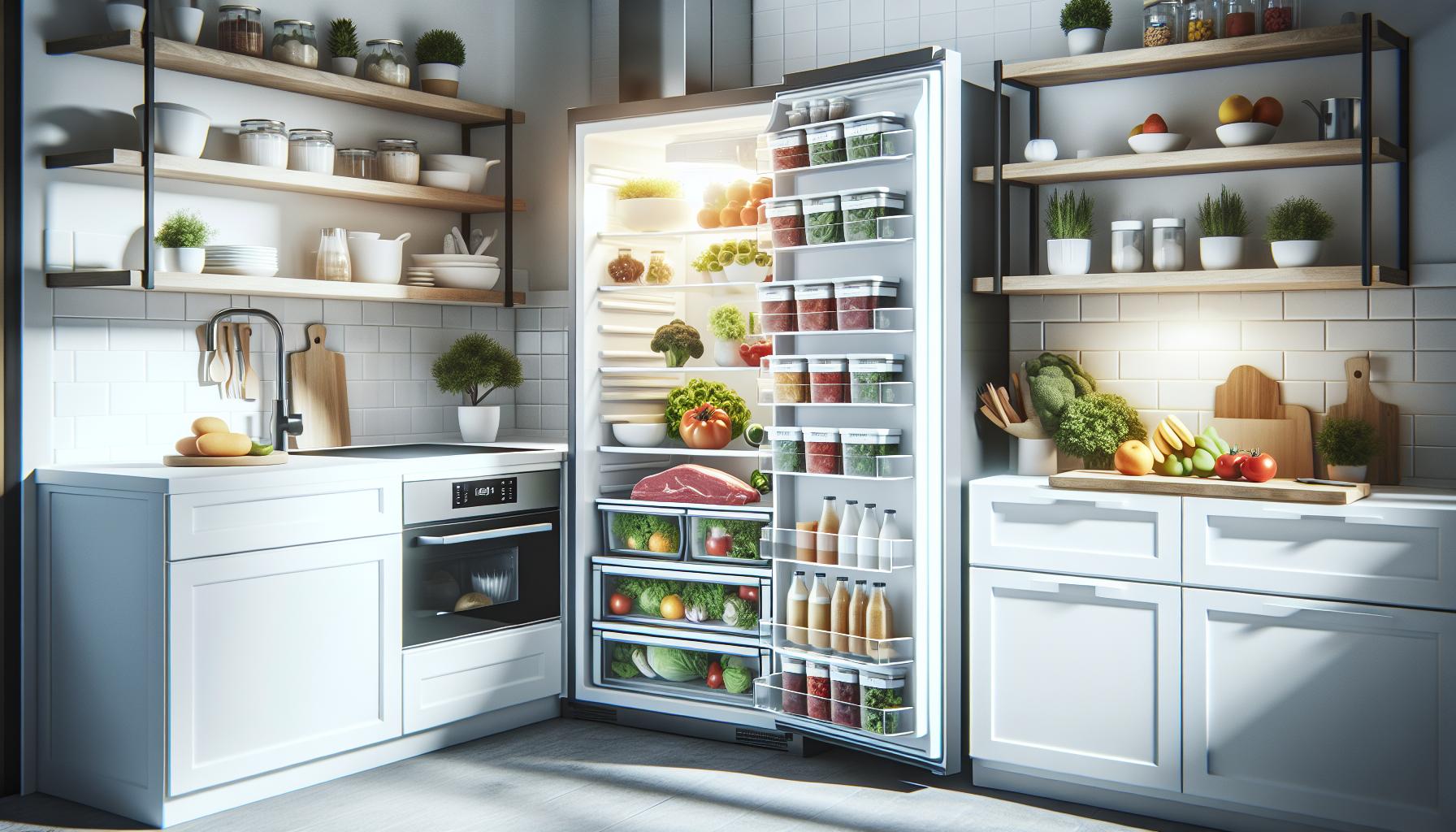
Signs of Spoilage: When to Toss Your Frozen Beef
Not all frozen beef remains safe indefinitely; recognizing the signs of spoilage is crucial for preventing foodborne illnesses and ensuring quality meals. Freezing beef slows down spoilage bacteria, but it doesn’t eliminate them entirely. Thus, it’s essential to monitor your frozen beef for any changes that indicate it’s time to toss it.
The first sign to watch for is color changes. Fresh beef typically has a bright red or purplish hue, depending on the cut. If your beef appears brown or gray, it may not be spoiled but could indicate that it has been exposed to air, which can affect the taste and texture. While discoloration alone doesn’t mean the beef is unsafe, it could be a sign that it’s lost some quality.
Another red flag is the development of freezer burn, characterized by white or grayish spots on the surface of the meat. Freezer burn occurs when moisture evaporates from the beef’s surface, leading to dry, leathery patches. Although freezer-burned meat is safe to eat, the affected areas may taste unpalatable, and it’s generally best to trim away the damaged portions or discard the meat altogether if it’s extensively compromised.
Finally, always rely on your senses: smell and texture are vital indicators of beef safety. When thawed, if the beef emits a sour or off odor, or if it feels sticky or tacky to the touch, these are strong signs of spoilage, and you should dispose of it immediately. It’s better to err on the side of caution; if you’re ever in doubt about the quality or safety of your frozen beef, it’s best to throw it away. Utilizing these signs can help you maintain a safe kitchen environment and enjoy high-quality meals crafted from your frozen reserves.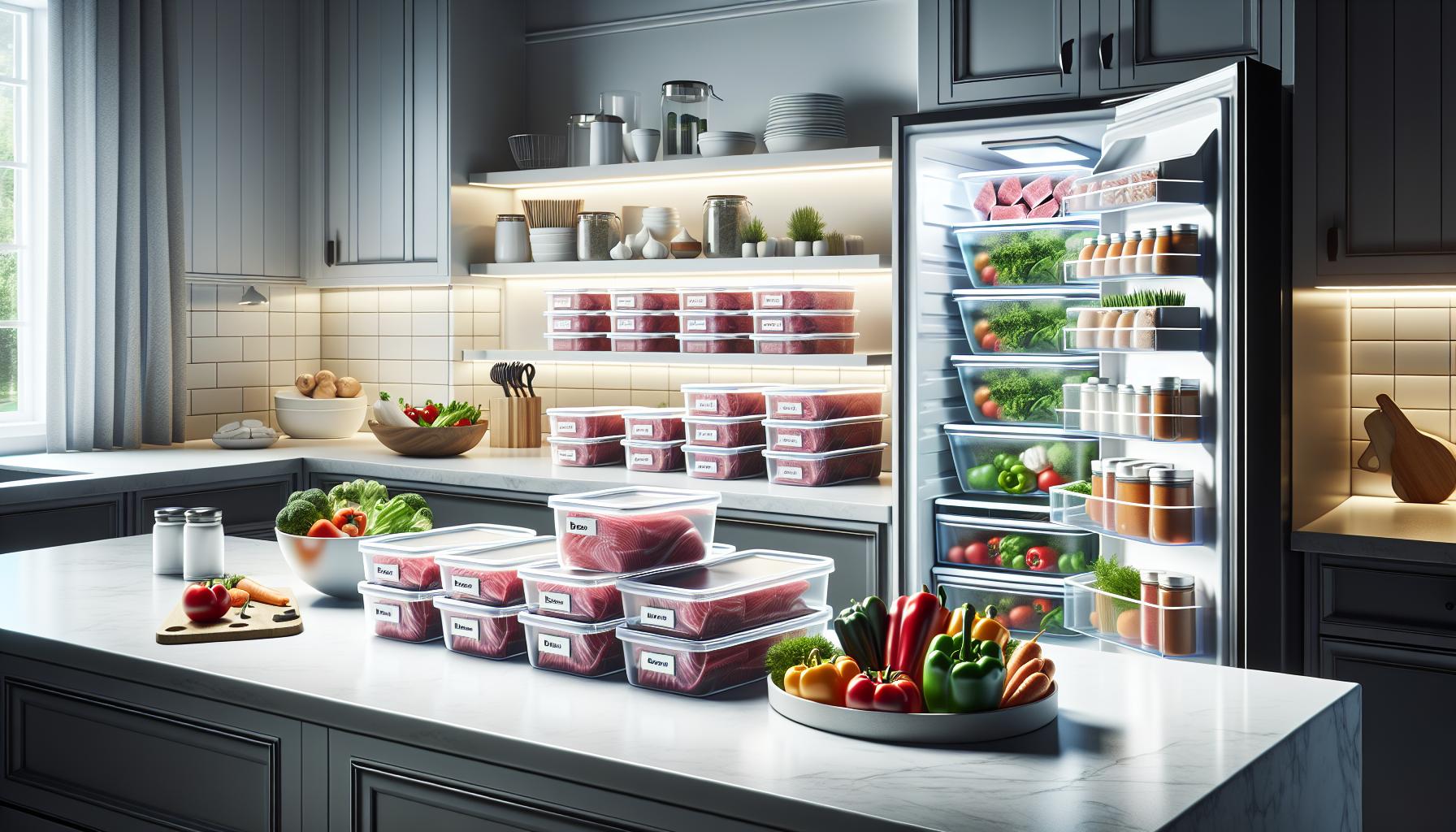
Thawing Frozen Beef Safely: A Comprehensive Guide
Thawing frozen beef properly is essential for maintaining both its safety and quality. Improper thawing can lead to uneven defrosting, where parts of the meat may reach temperatures that allow bacteria to grow while other sections remain frozen. To ensure that your beef is thawed safely, it’s important to follow a few key practices.
One of the safest methods for thawing beef is in the refrigerator. This method allows the meat to thaw gradually and keeps it at a safe temperature (below 40°F or 4°C). Place the frozen beef on a tray or in a shallow dish to catch any drippings. Depending on the size and cut, it may take anywhere from 12 to 24 hours for the beef to thaw completely. While this method requires some planning ahead, it is the most effective way to preserve the texture and flavor of the meat.
If you need to thaw beef more quickly, there are a couple of other methods that can be employed. The cold water method involves sealing the beef in a leak-proof plastic bag and submerging it in cold water. This should be done with water that is changed every 30 minutes to ensure it stays cold. Thawing time will vary depending on the thickness and weight of the meat, typically taking one to three hours. This method is faster but requires more attention.
For those in a real hurry, the microwave can be used as a last resort. Use the defrost setting, ensuring that you monitor the process closely to avoid partially cooking the beef. It is crucial to cook the beef immediately after thawing in the microwave, as parts of the meat may have begun cooking and could fall into the temperature danger zone.
Regardless of the method chosen, never leave beef to thaw at room temperature. As the outer surface warms, it can become a breeding ground for bacteria, posing a significant safety risk. Following these guidelines will not only keep your beef safe for consumption but also help you retain its quality and flavor for a delicious meal.
Impact of Freezing on Beef Quality and Flavor
Freezing beef can dramatically extend its shelf life, but it also impacts the quality and flavor of the meat. When beef is frozen, ice crystals form in the muscle fibers. If the beef is not frozen quickly and properly, these ice crystals can grow large enough to rupture cell walls, leading to moisture loss during cooking-a phenomenon often referred to as “drip loss.” This can result in a drier texture and less intense flavor once the meat is prepared after thawing. To maintain both quality and cleanliness, it’s essential to follow proper freezing and storage techniques.
The texture of beef can also be affected by how long it remains frozen. While generally, beef can retain good quality in the freezer for about 4 to 12 months depending on the cut, it’s important to understand that each cut has its own freezer life. For instance, ground beef benefits from being used within 3 to 4 months, while a whole roast can stay fresh for up to a year. One key factor in maintaining beef quality during storage is the initial temperature of the meat when it is placed in the freezer. Quickly freezing fresh beef at 0°F (-18°C) or lower can help minimize damage from ice crystal formation, helping retain its original flavor and texture better than slow freezing.
To maximize the flavor retention of beef during freezing, consider using airtight packaging methods. Vacuum sealing is the best option, as it prevents air from coming into contact with the meat, reducing the risk of freezer burn-an occurrence that not only affects texture but also imparts off-flavors due to oxidation. If vacuum sealing isn’t available, use high-quality freezer bags or wrap the beef tightly in plastic wrap followed by aluminum foil, ensuring there is as little air as possible. Labeling packages with the date of freezing helps keep track of storage times, ensuring you use the beef while it is still at its best.
Ultimately, understanding the can help you make informed decisions about how to store and utilize your meat. Regularly checking the temperature of your freezer and rotating your stock using a first-in, first-out inventory method will further aid in maintaining quality and flavor. With these precautions, you can enjoy delicious and satisfying beef dishes right from your freezer without compromising on the experience.
Extending the Life of Beef with Proper Storage Techniques
Freezing beef effectively can significantly prolong its shelf life while maintaining its flavor and texture. However, to ensure optimal storage of your beef, several key techniques help minimize deterioration and prevent freezer burn. Proper storage not only impacts the quality of the meat but also ensures its safety for consumption when you’re ready to use it.
One of the most crucial aspects of extending the life of beef in the freezer is the choice of packaging. To minimize exposure to air-which leads to freezer burn-consider using vacuum-sealed bags. These bags remove oxygen, thereby preserving the meat’s moisture and flavor. If vacuum sealing is not available, use high-quality freezer bags or wrap the beef tightly in plastic wrap followed by aluminum foil, ensuring as little air as possible remains. Be sure to label each package with the date of freezing to keep track of freshness and ensure you use the older items first.
Another factor that plays an important role in beef storage is the freezer temperature. Keeping your freezer consistently at 0°F (-18°C) or lower is critical. Frequent temperature fluctuations can lead to partial thawing and refreezing, which degrade the quality of the meat. A reliable freezer thermometer can help monitor this, ensuring that your beef remains at optimal conditions. Additionally, try to allow for proper airflow around the stored meat-avoid overloading the freezer as this can impact air circulation and cooling efficiency.
For added safety and longevity, practice the first-in, first-out (FIFO) method. By using the oldest items first, you minimize waste and make sure that less frequently used items don’t slip to the back and become forgotten. Regularly reviewing your frozen inventory can aid in efficient meal planning and help maintain steady rotation. With these proper storage techniques, you can ensure that your beef remains not only safe to eat but also a delicious addition to your meals for months to come.
Tips for Maintaining Optimal Freezer Temperature
Maintaining an optimal freezer temperature is crucial for ensuring that your beef remains safe to eat and retains its quality over time. A consistently low temperature, ideally at or below 0°F (-18°C), significantly slows down the growth of bacteria and preserves the texture and flavor of the meat. It’s essential to recognize the importance of temperature stability: fluctuations can create an environment conducive to freezer burn and spoilage.
To effectively monitor and manage your freezer’s temperature, consider investing in a reliable freezer thermometer. Digital thermometers often have more precise readings and can help you quickly spot any alarming temperature changes. If your freezer does not have a built-in thermometer, place a standalone one inside to consistently check the conditions. Make it a habit to validate the temperature regularly, especially during warm weather or after power outages.
Additionally, proper airflow is vital in maintaining an even temperature throughout the freezer. Avoid overcrowding the unit, as this can obstruct air circulation and lead to variations in temperature. If you notice that some sections of your freezer are colder than others, arrange items in a way that allows for optimal airflow, ensuring that colder spots do not freeze food while other areas remain above freezing.
Another preventative measure is to stock your freezer appropriately. Keeping it full, but not overstuffed, can help maintain temperature during regular door openings. If you are short on food items, consider filling water bottles or other freezer-safe containers to help stabilize the temperature. Lastly, try to minimize the frequency of opening the freezer door, as this places added strain on the temperature regulation and can lead to increased cycles of thawing and refreezing, risking the quality of your beef. By monitoring and optimizing the conditions in your freezer, you can enjoy the best quality beef and extend its freezer life significantly.
Using an Inventory System for Your Frozen Beef
Keeping track of what you have in your freezer is essential for effective meal planning and preventing waste. An organized inventory system for your frozen beef can not only help you monitor freshness but also optimize your shopping habits and culinary creativity. By creating a system that works for you, you can easily avoid forgetting about packages that may have lingered too long at the back of the freezer.
To set up an efficient inventory system, begin by compiling a simple list that includes the types of beef you have, their cut, and the date they were frozen. You can do this on paper, a spreadsheet, or using a food tracking app. Here’s a straightforward format to consider:
| Beef Cut | Date Frozen | Quantity | Notes |
|---|---|---|---|
| Ground Beef | 06/01/2025 | 2 lbs | Use for tacos |
| Ribeye Steaks | 05/15/2025 | 4 steaks | Grilling on July 4th |
| Brisket | 04/20/2025 | 1 whole | For barbecue |
This table allows you to quickly glance at your inventory and plan meals accordingly. Update your inventory whenever you add to or remove items; this habit keeps the information fresh and useful over time.
Implementing a first-in, first-out (FIFO) approach can ensure that older cuts are prioritized for use before they lose quality. Consider labeling each package clearly with the freezing date and any specific details about the cut. Use freezer-safe bags or containers that minimize air exposure to prevent freezer burn, which occurs when air comes into contact with the meat surface.
Moreover, your inventory can also serve as a guide for portion control and meal preparation. If you notice that certain cuts are dominating your freezer space, you may decide to incorporate them into your meal plan for the week. This proactive approach not only enhances your culinary repertoire but also helps you maintain an organized and efficient freezer, ultimately extending the shelf life of your beef.
Delicious Ways to Use Leftover Frozen Beef
Using leftover frozen beef creatively can minimize waste and add variety to your meals. Whether you have brisket, roast, or ground beef, there are numerous delicious options for transforming these cuts into new culinary delights. Frozen beef can typically last between 4 to 12 months, depending on the cut, but the key is ensuring it is stored correctly to prevent freezer burn and maintain quality.
Start by considering your cuts of beef. Ground beef can be transformed into a variety of easy dishes. For instance, thawed ground beef can be seasoned and cooked for tacos, chili, or spaghetti sauce. Since it cooks quickly, it’s perfect for a busy weeknight meal. To avoid any blandness, incorporate vibrant spices or sauces to enhance the flavors.
Beef Stews and Soups
Chunks of steak or roast are ideal for hearty stews. Once thawed, simmer them with vegetables like carrots, potatoes, and onions in a rich broth. This method not only imparts rich flavor but also utilizes the meat’s robust texture. Cooking your beef in this way allows it to soak up the sauce and retain moisture, which is especially beneficial if you’re working with previously frozen meat.
Shredded Beef Dishes
Brisket and similar tougher cuts can be shredded after thawing and make fantastic fillings for sandwiches, tacos, or burritos. Cook them slowly using a slow cooker with BBQ sauce or a savory broth, then once tender, shred it with forks. Serve this succulent meat on a bun or as a topping for nachos-each bite bursts with flavor and reminds you of the comfort of home-cooked meals.
Stir-Fries and Casseroles
Thinly sliced beef works perfectly for stir-fries. Combine it with seasonal vegetables and a simple stir-fry sauce for a quick, nutritious dinner. Alternatively, using beef in casseroles provides both comfort and nutrition. Consider layering cooked beef with rice, vegetables, and cheese, then bake until the dish is bubbling and golden.
Each of these methods not only allows for creative meal planning but also reinforces food safety practices by ensuring that your frozen beef is used effectively before it loses any quality. Proper thawing methods, such as overnight in the refrigerator or quick-thawing in cold water, ensure that the beef remains safe and delicious. By making the most of your leftovers, you can enjoy diverse meals while minimizing food waste and maximizing satisfaction.
Common Myths About Freezing Beef Explained
Many people hold misconceptions about freezing beef that can lead to food waste or safety concerns. One of the most common myths is that frozen beef lasts indefinitely. While freezing will effectively preserve beef for a longer period, it doesn’t make it immune to quality deterioration. Ground beef and less tender cuts generally maintain their best quality for about 3 to 4 months, whereas premium cuts like steaks can last up to a year when properly stored. Beyond this timeframe, while the beef may still be safe to eat if kept at a consistent freezing temperature, the texture and flavor can suffer, leading to an unsatisfactory dining experience.
Another widespread belief is that freezer burn indicates spoiled meat. In reality, freezer burn occurs when meat is improperly wrapped, causing it to dry out and develop discolored patches. Although freezer-burned beef is safe to consume, the affected parts can be tough and less appetizing. To mitigate this, always wrap beef tightly in plastic wrap or aluminum foil, and consider vacuum-sealing for optimal protection against air exposure. Remember, the better the beef is wrapped, the less likely it is to suffer from freezer burn.
A further misconception is that thawing beef at room temperature is safe. Thawing meat this way can allow bacteria to grow on the surface while the inside remains frozen. Instead, beef should be thawed in the refrigerator, where it will remain at a safe temperature. If you’re short on time, use cold water for quick-thawing, ensuring the meat is in a leak-proof bag. If you choose the microwave, cook the beef immediately afterwards since parts can begin to cook during the thawing process.
Finally, many believe that once beef is frozen, it cannot be refrozen. However, you can safely refreeze beef if it has been thawed in the refrigerator without cooking. The texture might change slightly, but it remains safe. Always ensure good meat handling practices and maintain a consistent freezer temperature of 0°F (-18°C) or lower to keep your beef at its best quality throughout its storage life.
FAQ
Q: How long can ground beef last in the freezer?
A: Ground beef can typically last for about 3 to 4 months in the freezer while maintaining optimal quality. Beyond this period, it is safe to eat but may experience a decline in flavor and texture. For best results, wrap it tightly to prevent freezer burn.
Q: What are the best practices for preventing freezer burn on beef?
A: To prevent freezer burn, wrap beef tightly in plastic wrap or aluminum foil, then place it in an airtight freezer bag or container. Remove as much air as possible before sealing. Label with the date to track storage duration.
Q: Can beef go bad if it’s frozen too long?
A: Yes, while frozen beef remains safe indefinitely, it can lose quality if stored too long. Flavor and texture may deteriorate after 4-12 months, depending on the cut. Regularly check your inventory to ensure freshness.
Q: How can I tell if frozen beef has freezer burn?
A: Frozen beef with freezer burn presents as discolored patches, usually white or gray, and may have a dry texture. While it’s safe to consume, the affected areas can taste off. Trim these parts before cooking.
Q: Is it safe to refreeze beef after it’s been thawed?
A: Yes, it is safe to refreeze beef that has been properly thawed in the refrigerator. However, for best quality, it should ideally be cooked before refreezing. This helps maintain flavor and texture.
Q: What is the ideal freezer temperature for storing beef?
A: The ideal freezer temperature for storing beef is 0°F (-18°C) or lower. At this temperature, beef remains safe for long periods, preventing growth of bacteria and preserving its quality.
Q: How should leftover cooked beef be stored in the freezer?
A: Leftover cooked beef should be cooled, wrapped or placed in airtight containers, and labeled with the date. It can be stored in the freezer for 2 to 3 months without significant quality loss.
Q: Can I add seasonings or marinades before freezing beef?
A: Yes, you can season or marinate beef before freezing. This not only enhances flavor but also can help tenderize the meat. Ensure that the packaging is airtight to avoid freezer burn.
This FAQ section aims to provide clear, detailed, and SEO-optimized responses related to the topic of freezing beef, ensuring user value and ease of access for further exploration.
To Wrap It Up
Now that you know how to properly store beef in the freezer to prevent freezer burn and maximize its shelf life, it’s time to take action! Remember, beef can safely last up to 12 months in the freezer when stored correctly. Don’t let your valuable food go to waste – check your freezer today and ensure your meat is properly packaged and labeled.
For more tips on prolonging the freshness of your food, explore our articles on “Best Freezing Practices for Meat” and “How to Tell if Meat Has Gone Bad.” If you have any questions or want to share your own freezing tips, drop a comment below! Join our newsletter for the latest food storage insights and exclusive content to enhance your culinary experience.
Your food safety journey doesn’t have to end here. Dive into related topics and empower yourself with the knowledge to make informed choices about your food storage and preparation. Let’s keep your kitchen efficient and your meals safe!




